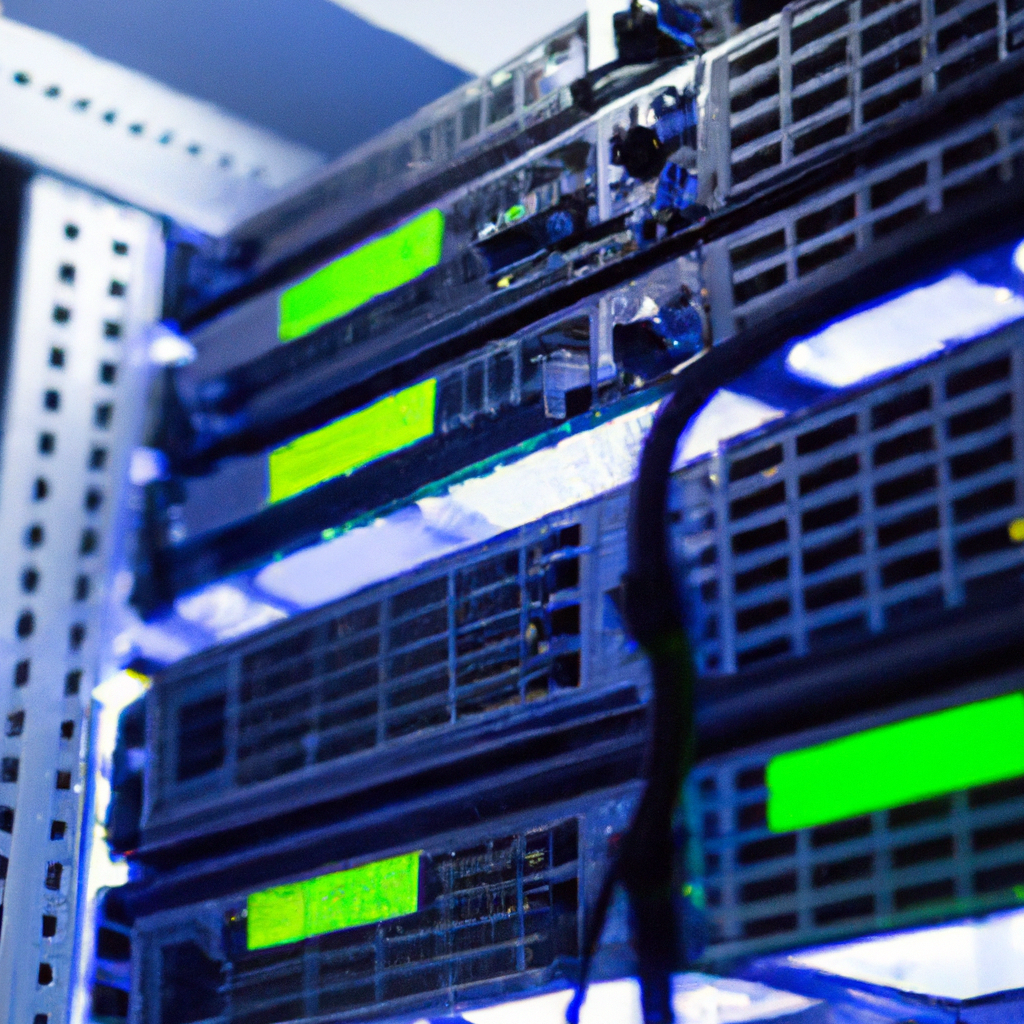So you want to build powerful and scalable API backends? Look no further! In this article, we will explore the world of GCP Endpoints and discover how they can revolutionize your API development process. Whether you’re a seasoned developer or just starting out, GCP Endpoints provide a seamless and efficient way to build, deploy, and manage API backends. Say goodbye to complex infrastructure setup and hello to intuitive configuration options that will have your API up and running in no time. Let’s dive into the world of GCP Endpoints and unlock the potential of your APIs.

Understanding GCP Endpoints
What are GCP Endpoints?
GCP Endpoints is a service that allows developers to easily develop, deploy, and manage API backends on the Google Cloud Platform (GCP). It acts as a reverse proxy that enables you to expose your API securely while leveraging the power of Google infrastructure. GCP Endpoints provides features such as authentication, authorization, monitoring, logging, caching, and performance optimization, making it an ideal solution for building robust and scalable API backends.
How do GCP Endpoints work?
GCP Endpoints works by acting as a secure and scalable gateway for your APIs. When a client sends a request to your API, it first goes through the GCP Endpoints service. GCP Endpoints then handles authentication and authorization, ensuring that only authorized clients can access your API. Once authenticated, the request is forwarded to your API backend for processing.
By default, GCP Endpoints uses an HTTP/JSON mapping, which means that it can handle requests in a format that is widely supported by modern APIs. You can also configure GCP Endpoints to work with other protocols, such as gRPC, to suit your specific needs.
Benefits of using GCP Endpoints
Using GCP Endpoints for building your API backends offers several benefits:
-
Security: GCP Endpoints provides built-in authentication and authorization capabilities, allowing you to easily secure your API backend. You can configure access controls, set up API keys, and integrate with identity providers to ensure that only authorized clients can access your API.
-
Scalability: GCP Endpoints is built on Google’s robust and scalable infrastructure, enabling your API backend to handle high volumes of traffic without compromising performance. It automatically scales to meet the demands of your application, allowing you to focus on developing your API rather than worrying about infrastructure.
-
Monitoring and Logging: GCP Endpoints integrates with Google Cloud Monitoring and Logging services, providing you with visibility into the performance and health of your API backend. You can monitor key metrics, set up alerts, and analyze logs to troubleshoot and diagnose any issues that may arise.
-
Caching and Performance Optimization: GCP Endpoints supports various caching strategies, allowing you to cache responses at different levels to improve performance and reduce the load on your API backend. It also provides performance optimization features, such as request/response compression and intelligent load balancing, to ensure fast and efficient API access.
-
Flexibility and Extensibility: GCP Endpoints supports multiple API frameworks, giving you the flexibility to choose the one that best suits your needs. Whether you prefer a RESTful approach with OpenAPI/Swagger or a more RPC-style approach with gRPC, GCP Endpoints has you covered. It also allows you to extend its functionality through custom features and configurations.
With these benefits in mind, let’s explore the prerequisites for building API backends with GCP Endpoints.
Prerequisites for Building API Backends with GCP Endpoints
GCP Account and Project Setup
Before you can start building API backends with GCP Endpoints, you will need a GCP account and a project set up. If you haven’t already done so, you can sign up for a GCP account and create a new project in the GCP Console. Once you have a project, you can enable the necessary APIs and set up billing for your project.
Creating and Configuring Service Accounts
Service accounts are the identities that your API backend will use to authenticate and authorize requests made through GCP Endpoints. You will need to create a service account and configure its permissions to access the necessary resources for your API backend.
To create a service account, go to the IAM & admin section in the GCP Console and click on “Service Accounts”. From there, you can create a new service account and assign the appropriate roles and permissions.
Understanding Authentication and Authorization Concepts
Authentication and authorization are crucial components of API security. In order to use GCP Endpoints effectively, it’s important to understand the concepts of authentication and authorization.
Authentication is the process of verifying the identity of a client making a request to your API. GCP Endpoints supports various authentication methods, such as API keys, JSON Web Tokens (JWT), and OAuth 2.0. You can choose the method that best fits your requirements and configure it accordingly.
Authorization, on the other hand, is the process of determining whether a client has the necessary permissions to access a particular resource or perform a specific action. GCP Endpoints integrates with Google Cloud’s Identity and Access Management (IAM) service, allowing you to define fine-grained access controls and policies for your API backend.
By understanding these concepts and setting up the necessary prerequisites, you are now ready to design your API backend with GCP Endpoints.

Designing API Backend with GCP Endpoints
Defining API Specifications with OpenAPI/Swagger
Before you start implementing your API backend, it’s important to define the specifications for your API. OpenAPI (formerly known as Swagger) is a widely adopted specification format for defining RESTful APIs. It provides a standardized way to describe the endpoints, request/response formats, authentication requirements, and other important aspects of your API.
With GCP Endpoints, you can leverage OpenAPI to define your API specifications. You can either write the OpenAPI specification manually or use tools like Swagger Editor or Swagger UI to generate the specification file.
Choosing Appropriate API Framework
Once you have defined your API specifications, the next step is to choose an API framework that will help you implement your API backend. GCP Endpoints supports multiple frameworks, including popular ones like Flask, Express.js, and Django. The choice of framework depends on your preferences, the programming language you are comfortable with, and the specific requirements of your API.
When choosing an API framework, it’s important to consider factors such as ease of development, performance, scalability, community support, and integration capabilities with GCP Endpoints.
Designing for Security and Scalability
When designing your API backend with GCP Endpoints, it’s important to prioritize security and scalability. Here are a few key considerations:
-
Secure APIs: Make sure to implement proper authentication and authorization mechanisms to protect your APIs from unauthorized access. Leverage the features provided by GCP Endpoints, such as API keys, JWT, and OAuth 2.0, to ensure secure communications.
-
Data Privacy: If your API deals with sensitive user data, consider implementing encryption and data protection measures to ensure the privacy and integrity of the data.
-
Scalability: Design your API backend with scalability in mind. Consider using distributed systems, load balancing, and caching techniques to handle high volumes of traffic and ensure smooth performance even under heavy load.
-
Error Handling: Implement robust error handling mechanisms to provide meaningful error messages and handle various failure scenarios gracefully.
With these design considerations in place, you can now move on to implementing your API backend with GCP Endpoints.
Implementing API Backend with GCP Endpoints
Writing API Backend Code
Once you have finalized your API specifications and chosen the appropriate API framework, you can start implementing your API backend code. This involves writing the business logic that handles the incoming requests, processes the data, and generates the appropriate responses.
Depending on the chosen API framework, you will typically define routes, handlers, and middleware to handle incoming requests. You will also need to integrate with GCP Endpoints to authenticate requests, enforce access controls, and handle other features such as caching and performance optimization.
Configuring GCP Endpoints
After writing your API backend code, you need to configure GCP Endpoints to ensure that it can route requests to your API properly. This involves specifying the API configuration file that defines the mapping between your API backend and GCP Endpoints.
In the configuration file, you will define the backend service, endpoints, routes, and other settings specific to your API. You will also configure security features like authentication and authorization, define caching rules, and specify performance optimization settings.
Deploying and Managing API Backend
With your API backend code and GCP Endpoints configuration in place, you are now ready to deploy your API and start serving requests. GCP provides various deployment options, such as App Engine, Kubernetes Engine, and Cloud Functions, depending on your requirements.
Once your API is deployed, you can use GCP’s management tools to monitor and manage your API backend. You can leverage the monitoring and logging features of GCP Endpoints to gain insights into the performance and health of your API. You can also analyze logs to troubleshoot and debug any issues that may arise.
With your API backend implemented and deployed, it’s crucial to secure it with GCP Endpoints.

Securing API Backend with GCP Endpoints
Authentication and Authorization Configuration
Securing your API backend starts with configuring the authentication and authorization mechanisms provided by GCP Endpoints. You need to define the authentication method and authorization policies for your API to ensure that only authorized clients can access your API.
GCP Endpoints supports various authentication methods, such as API keys, JWT, and OAuth 2.0, each with its own set of advantages and considerations. Choose the method that aligns with your security requirements and configure it accordingly. You can define fine-grained access controls using IAM policies to restrict access to specific resources and actions within your API.
Securing Endpoints with API Key
To further enhance the security of your API backend, you can utilize API keys with GCP Endpoints. API keys act as a unique identifier for clients and can be used to control access to your API. By requiring clients to provide a valid API key, you can prevent unauthorized access and track usage for billing and monitoring purposes.
With GCP Endpoints, you can configure API key restrictions to limit access to specific clients or IP addresses. You can also enable API key logging to track the usage of each key and detect any suspicious or abusive behavior.
Enforcing Access Control Patterns
In addition to authentication and authorization mechanisms, you can enforce access control patterns to further secure your API backend. GCP Endpoints allows you to define custom access control rules based on request metadata, headers, or other criteria.
By implementing access control patterns, you can enforce rate limiting, implement quota management, and prevent DoS attacks. You can also integrate with GCP’s Cloud Armor, a web application firewall (WAF) service, to protect against common web vulnerabilities and malicious traffic.
Securing your API backend is essential, but monitoring and logging are equally important.
Monitoring and Logging with GCP Endpoints
Understanding GCP Monitoring and Logging Services
GCP provides various monitoring and logging services that integrate seamlessly with GCP Endpoints. These services help you gain insights into the performance, health, and usage of your API backend.
Google Cloud Monitoring allows you to set up alerts, monitor key metrics, and visualize the performance of your API. You can track metrics such as response times, error rates, and resource utilization to identify bottlenecks and performance issues.
Google Cloud Logging helps you centralize and analyze logs from your API backend. You can collect logs generated by your API, analyze them in real-time, and set up alerts based on specific log events. This allows you to troubleshoot issues, detect anomalies, and track user activities.
Enabling Monitoring and Logging for API Backend
To enable monitoring and logging for your API backend, you need to configure the necessary settings and integrations with GCP services. This typically involves specifying the monitoring and logging configurations in your GCP Endpoints configuration file.
You can define the metrics and logs that you want to collect, set up alerts based on thresholds or specific events, and specify the desired retention period for logs and metrics. GCP Endpoints will then automatically start collecting and forwarding the metrics and logs to the respective monitoring and logging services.
Analyzing and Troubleshooting API Backend Issues
Once you have monitoring and logging enabled for your API backend, you can start analyzing the collected data to identify and troubleshoot any issues that may arise.
By analyzing metrics and logs, you can get insights into the performance of your API, identify any anomalies or errors, and take appropriate actions to rectify them. You can use the diagnostic tools provided by GCP, such as Stackdriver Trace for request tracing and Stackdriver Debugger for in-depth debugging, to further investigate and troubleshoot specific issues.
With monitoring and logging in place, you can proactively monitor the health of your API backend and ensure optimal performance.

Caching and Performance Optimization
Implementing Caching Strategies
Caching can significantly improve the performance and scalability of your API backend by reducing the number of requests that need to be processed. GCP Endpoints provides various caching strategies that you can leverage to cache responses at different levels.
You can implement server-side caching using tools like Google Cloud CDN or Cloud Memorystore for Redis. This allows you to cache responses closer to the client, reducing latency and the load on your API backend. You can also implement client-side caching by utilizing cache headers and HTTP response caching mechanisms.
When implementing caching, it’s important to consider cache invalidation strategies to ensure that stale or outdated data is not served to clients. GCP Endpoints provides features like Cache-Control headers and cache invalidation mechanisms to help you manage caching effectively.
Optimizing API Backend Performance
In addition to caching, there are several other performance optimization techniques that you can implement to enhance the performance of your API backend with GCP Endpoints.
Optimizing database queries, implementing request/response compression, using asynchronous processing, and leveraging GCP’s CDN and load balancing capabilities are some of the techniques you can employ to improve performance. It’s also important to design your API backend with scalability in mind, allowing it to handle high volumes of traffic without compromising performance.
Regular performance testing and monitoring are crucial to ensure that your API backend can handle the anticipated load and to identify any potential bottlenecks or performance issues. Load testing tools and techniques can help simulate real-world traffic scenarios and measure the responsiveness and scalability of your API.
With caching and performance optimization in place, you can ensure that your API backend delivers optimal performance to your users.
Best Practices for Building API Backends with GCP Endpoints
Design Principles for API Backends
When building API backends with GCP Endpoints, it’s important to follow certain design principles to ensure the reliability, maintainability, and scalability of your APIs.
-
Consistency: Design your APIs to follow consistent naming conventions, request/response formats, and error handling mechanisms. This makes it easier for developers to understand and consume your APIs.
-
Versioning: Implement versioning strategies to gracefully handle changes and updates to your API. Use version numbers in your API URLs or leverage features like OpenAPI’s versioning support to ensure backward compatibility.
-
Documentation: Provide comprehensive and up-to-date documentation for your APIs. This helps developers understand how to interact with your APIs, the available endpoints, request/response formats, and any authentication/authorization requirements.
-
Error Handling: Implement meaningful error messages and error handling mechanisms in your APIs. This enhances the developer experience and helps users troubleshoot issues more effectively.
-
Performance Testing: Regularly test the performance of your API backend to identify and address any performance bottlenecks. Load testing and performance monitoring tools can assist with this process.
Security Best Practices
Implementing strong security measures is crucial when building API backends with GCP Endpoints. Here are some security best practices to consider:
-
Encryption: Use TLS/SSL to encrypt communications between clients and your API backend. This ensures the confidentiality and integrity of the data exchanged.
-
Least Privilege: Follow the principle of least privilege when configuring access controls. Grant only the necessary permissions to service accounts and users to minimize the risk of unauthorized access.
-
Audit Logging: Enable audit logging for your API backend to track user activities and detect any suspicious behavior. Regularly review and analyze audit logs to identify potential security breaches.
-
Regular Security Updates: Keep your API backend and its underlying infrastructure up to date with the latest security patches and updates. This helps protect against known vulnerabilities.
-
Security Reviews: Regularly conduct security reviews and assessments of your API backend to identify any potential security weaknesses. Penetration testing and vulnerability assessments can help identify and address security vulnerabilities.
Performance and Scalability Considerations
To ensure optimal performance and scalability of your API backend, consider the following:
-
Load Balancing: Use GCP’s load balancing service to distribute incoming traffic evenly across multiple instances of your API backend. This helps improve performance and ensures high availability.
-
Horizontal Scaling: Design your API backend to be horizontally scalable, allowing you to add or remove instances dynamically based on the demand. This helps handle high volumes of traffic and ensures smooth performance.
-
Caching: Implement appropriate caching strategies to reduce the load on your API backend and improve response times. Leverage server-side and client-side caching techniques to cache frequently accessed data.
-
Asynchronous Processing: Whenever possible, offload long-running or resource-intensive operations to background tasks or queues. This allows your API backend to respond quickly to client requests and improves overall performance.
-
Performance Monitoring: Continuously monitor the performance metrics of your API backend and set up alerts to detect any performance issues. This allows you to proactively address bottlenecks and ensure optimal performance.
By following these best practices, you can build robust and scalable API backends with GCP Endpoints.

Case Study: Building and Scaling an API Backend with GCP Endpoints
Overview of the Case Study
To illustrate the process of building and scaling an API backend with GCP Endpoints, let’s consider an example case study. Imagine a social media platform that allows users to post, like, and comment on photos.
The API backend for this platform would need to handle various requests, such as retrieving user information, posting new photos, retrieving a user’s photo feed, and managing likes and comments. The API should be secure, scalable, and performant, ensuring a seamless user experience.
Architectural Design Decisions
In designing the API backend for the social media platform, several architectural design decisions need to be made. For example:
-
Microservices: The API backend can be implemented as a set of microservices, each responsible for a specific domain or functionality. This allows for better separation of concerns and scalability.
-
Database Choice: The choice of a database, such as Cloud Firestore or Cloud Spanner, will depend on the specific requirements of the application. Consider factors such as data consistency, scalability, and cost when making this decision.
-
Authentication and Authorization: Determine the appropriate authentication and authorization mechanisms based on the security requirements of the platform. This may involve using JWT, OAuth 2.0, or other authentication methods supported by GCP Endpoints.
Challenges Faced and Solutions Implemented
During the implementation of the API backend, various challenges may arise. Some potential challenges and their corresponding solutions include:
-
Scalability: As the social media platform gains popularity and user traffic increases, the API backend needs to scale to handle the increased load. Horizontal scaling, load balancing, and caching strategies can be implemented to ensure optimal performance under high traffic conditions.
-
Security: Implementing robust security measures is critical to protect user data and prevent unauthorized access. Configuring proper authentication and authorization mechanisms, encrypting sensitive data, and regularly reviewing and updating security measures can address these concerns.
-
Performance Optimization: The performance of the API backend plays a crucial role in delivering a seamless user experience. By optimizing database queries, implementing caching strategies, and leveraging GCP’s performance optimization features, the performance of the API backend can be enhanced.
By addressing these challenges and implementing appropriate solutions, the API backend for the social media platform can be successfully built and scaled using GCP Endpoints.
Conclusion
GCP Endpoints provides a powerful and secure platform for building API backends on the Google Cloud Platform. By leveraging GCP Endpoints, developers can easily develop, deploy, and manage robust and scalable API backends.
In this comprehensive article, we explored the various aspects of building API backends with GCP Endpoints. We covered the prerequisites and design considerations, as well as the implementation, security, monitoring, and optimization aspects of API development. We also discussed best practices and provided a case study to illustrate the process of building and scaling an API backend with GCP Endpoints.
With the knowledge and insights gained from this article, developers can confidently utilize GCP Endpoints to build highly performant and secure API backends on the Google Cloud Platform.